Raspberries have been actively cultivated since the 16th century. The world leader in the cultivation of raspberries, Russia, supplies the market with over 200 tons of berries per year. It is not surprising that such a popular and demanded culture is actively selected. Today in nurseries you can find hundreds of varieties, each of which has certain advantages over others.
Content
Description and characteristics of raspberry varieties
The varieties described below are collected in groups, but it should be understood that many of them can rightfully be attributed to several groups at once. For example, "Apricot" is yellow-fruited, and remontant, and thornless, and frost-resistant.
Disease and Pest Resistant Varieties
Raspberries are affected by a wide variety of diseases. Many wild species have high resistance to individual pests or diseases. For example, wine raspberries are not affected by a raspberry beetle, and sweet or Korean ones have a good immunity to fungal diseases. Therefore, the variety can be resistant to one pathogen and sensitive to another. Are carriers of resistance genes:
- To the purple spot: Scarlet sail, Balsam, Brigantine, Vislukha, Kirzhach, Latam, Meteor, Muskoka, Novost Kuzmina, Modest, Phoenix.
- Anthracnose: Augustine, Molling Promis, Muskoka, Newburgh, September, Modest.
- For powdery mildew: Molling Landmark, Muskoka, Novost Kuzmina, Visluha, Phoenix.
- To gray rot: Carnival, Cumberland, Phoenix.
- To the fluffy dwarf virus and fungal diseases: Augustine.
- To mycoplasma overgrowth: Latham, Newburgh, Muskoka, Phoenix.
- For viruses: Muskoka, Molling Promis, Newburgh.
- To aphids: Maroseyka, Molling Landmark, September, Chief.
- To the raspberry gnat (raspberry shoot gall midge): Molling Landmark, Muskoka, White Spirina, hawthorn and fragrant raspberries.
- To the raspberry mite: Augustine.
Some of the most interesting modern varieties from the point of view of immunity and health: Aboriginal, Brilliant, Cumberland, Kalashnik, Hercules (popularly - Hercules), Taganka, Ugolyok, Phoenix, Phenomenon.
Disease resistant varieties in the photo
- Raspberries Aboriginal in full ripeness
- Ripe black-purple and young red Cumberland raspberries
- The first berries of the Kalashnik variety
- Hercules (Hercules) berries ready to harvest
- Fully and partially ripe raspberries Ugolok
Description and characteristics of drought-resistant raspberry varieties
Drought tolerance is an important parameter because garden raspberries are generally sensitive to lack of moisture. In hot, dry summers, the shoots become smaller, the yield drops, the weakened bush is often attacked by spider mites. It is noteworthy that drought-resistant varieties usually have medium-sized berries. Many varieties that are considered resistant (for example, Canadian) become shallow in the heat, but this is not a big drawback - the berries become even sweeter and tastier. The following are the varieties you should definitely consider in dry summer regions:
- Brilliant, 1993, recommended for Siberia, the Urals. Good health. Chokeberry. High resistance to all negative parameters: drought, frost, pests, diseases. According to the official description, it is a wonderful variety, but there are no reviews, on many resources there are erroneous photos with red berries.
- Gusar, Russia, I. Kazakov, "Golden Series". Legendary variety. Winter-hardy, resistant to diseases and pests. Withstands prolonged droughts, an excellent combination of other qualities: good in taste, and in size, and in yield.
- Kirzhach, sometimes - Kerzhach, 1994, selection of V.V. Kichina. It tolerates heat and drought well. An unpretentious decent variety for beginners, although many call it an ordinary one. Looks like Lazarevskaya.
- Meteor, 1993, zoned for all western regions of Russia. One of the most drought-resistant, it is not afraid of prolonged heat, the fruits remain just as tasty. Some gardeners call Meteor the most unpretentious, along with the Hussar and the Runaway. Another plus is very early fruiting.
- Amber. There is also Amber Sadko. This is the same variety, but improved in the SADKO nursery. Very high drought resistance is declared, the berries are sweet, interesting in taste, do not crumble. High resistance to disease. There are very few reviews, but they are positive.
- Eurasia - the berries are not the most delicious, they are small by modern standards, they have no aroma. Pros: standard, does not require a garter, compact, beautiful. Very persistent. Recommended by the State Register for all regions of Russia, but has not yet gained popularity. Although there are encouraging reviews showing beautiful plantings with abundant fruits.
- The award is a good 1973 grade of admission, zoned throughout Russia, but not in the register in 2018. Looks like Volnitsa, Sun, Hussar. For some reason it is not popular, but those who grow it are very happy. It shows itself perfectly in the conditions of the Urals: large berries, good health. More resistant to disease than Newburgh.
- Primara is a fashionable remontant very early variety of Ukrainian selection. The berries are amazing in size. Like any large-fruited variety, it should be sensitive to drought and heat, but with support (abundant watering, shelter between rows of mulch) it tolerates dry winds and heat perfectly, unlike Brusvyana, which, even with such events, bakes and turns white. However, everything is not so unambiguous, some Ukrainian gardeners argue that shading is necessary.
- Vera - zoned in 1989 for Central Russia and Western Siberia. Lots of good reviews. Spikes are the only negative. The berries are not gigantic, but of decent size, the harvest is early, plentiful and extremely friendly - for those who want to have fresh raspberries on the table as long as possible, it is better to supplement Vera with other varieties. High resistance to heat.
There are varieties that are promising and interesting from the point of view of drought resistance, for example, Alaya Rossyp or Modest. However, these varieties are poorly known to gardeners, there are practically no reviews.
The varieties of British selection have good drought resistance: Glen Ample, Glen Prosen, Joan Jay, Swiss Zyugana, which shows itself well in the south of Ukraine. Some Cossack varieties are good, for example, Solnyshko. According to reviews, the remontant Dnieper 2, a good standard Penguin, tolerates the drought perfectly.
Drought tolerant raspberry pictured
- Raspberry bush hussar during fruiting
- The size of the berries of raspberry Hussar in comparison with a matchbox
- Raspberry bush Eurasia during fruiting
- Raspberry Meteor Berries Ready To Harvest
- Raspberry Primara size
- Primara raspberries, ready to harvest
- Ripe raspberries Shy
Description and characteristics of varieties of early ripe raspberries
Such an indicator as early maturity is important not only in the northern regions, where late varieties simply do not have time to give all the possible harvest. It's always nice to get a handful of berries not in August, but in June-July. Early maturity is important for growing raspberries for sale. In order to reach a maximum of buyers, varieties with different fruiting periods are combined in industrial areas. The earliest and latest are especially in price.
The most interesting early ones are described below:
- Malakhovka, in the register since 1993, is recommended for the Central region. The first fruits are in mid-July. Well known to gardeners, for 20 years its pros and cons have been well studied. It is appreciated for its aromatic, truly raspberry berries. The yield is small, but the variety pleases with its stability.
- Patricia, selection of V. V. Kichina. The beginning of fruiting is June 15–20. One of the most popular large-fruited raspberries. Captivates with productivity and taste of berries. Many amateur gardeners have a leader variety.
- The sun, entered in the register in 1992, is recommended for the Central regions, the North Caucasus, the Volga-Vyatka region. There are few reviews, but they are encouraging: amazing taste, yield, health. The sun is called the best summer variety of Kazakov's selection after Gusar.
- Stoleshnik, 1992, V.V. Kichiny, is not included in the State Register, but is popular. Begins to bear fruit in early July, a little later than Patricia. Very similar to Patricia, only the berries are more rounded. Reliable, understandable, familiar. It is appreciated for its predictability: dessert taste, large berries, excellent yields - and this is with standard agricultural technology and unpretentiousness.
What other varieties can you consider if you want to get early raspberries to the table? Of the black-fruited, this is Shiny, Povorot (Siberian selection). Large-fruited early (over 4 g) - these are Aboriginal, Sokolitsa, Taganka, numbered newest variety from Scotland 0435D3. Not too large, but very early berries can be obtained from the Meteor variety - in early June.
Little-known early traditional varieties include: Scarlet Sails or Scarlet Sail, Padishah, Vega, new 2017 Wanda, Giant Ruby, Korpiko, Michurinskaya Dessertnaya, Novokitaevskaya, Plamya, Early Zarya, Early Sladkaya, Solokha. All these varieties are absent in the register, there are almost no reviews from practitioners, only catalog descriptions are available. Of the zoned early varieties, there are no live reviews about: Kredo, Barnaulskaya, Bryanskaya, Lazarevskaya, Early Surprise.
Repaired varieties are never early. Depending on the variety, remontants bear fruit 2–4 weeks later than summer raspberries. But within the group of remontants, it is really possible to single out those that will begin to bear fruit earlier than others - you can get berries already in early August. These are: Hercules, Bryansk marvel, Diamond, Brusvyana. They often pin their hopes on Novosty Kuzmina, but strictly speaking, this old variety is not remontant, but in warm autumn it can show signs of remontant.
An interesting variety is Taganka or Taganskaya - large-fruited raspberry of V.V. Kichiny. Some fruits can weigh up to 23 g! But the average fruit size is also impressive - 4–12 g.The variety is popular, but it raises doubts - there are a lot of conflicting descriptions. In some reviews it is called non-renovated, but super-early, others describe it as a late renovation. Gardeners agree on one thing - it is amazingly tenacious, can grow and bear fruit even where, for example, the Shelf will not grow.
Legendary varieties Joan Gee, Lashka, a novelty from Britain, Molling Juneau, bear fruit at an early date from foreign ones - it belongs to the ultra-early (the first fruits can be picked at the beginning of June). Radziev's novelty from Poland is also early - the fruits ripen a week earlier than Lashka's.
Early varieties in the photo
- Raspberry Patricia Size Compared to Matchbox
- Ripening of raspberries Stoleshnik
- The size of ripe raspberries Taganka
- Raspberry Korpiko in the midst of fruiting
- Raspberry size Giant ruby
Description and characteristics of varieties of late-ripening raspberries
To date, more than 200 varieties have been registered, on which the fruits ripen at a later date. Early maturity or remontance is valued higher, but late-maturing varieties have their own advantages. Their flowers are not afraid of spring frosts; harvests are usually amicable and abundant. Late ripening is becoming fashionable today. It is especially valuable for those who grow raspberries for sale - fresh berries are in great demand in an atypical season for them.
The most interesting late varieties:
- Brigantine is a good combination of qualities for private gardeners, especially for those who are looking for the most unpretentious varieties and are not too critical of taste, but appreciate keeping quality, ease of cleaning.
- Indian summer and Indian summer 2. The first variety is outdated, it can be grown for yourself - amateurs speak extremely positively about it: the berries are not very large, but sufficient, pleasant taste, the plant is unpretentious. Indian Summer 2 is still a little tested, but a promising variety both for itself and for business.
- Mirage is a variety of average popularity, but those who have had a chance to plant it are happy. Stable, high-quality, good-quality, does not cause problems for the gardener, large fruits of very pleasant taste.
- Stolichnaya - along with Mirage, one of the largest-fruited late-ripening varieties. Reviews are inspiring: impressively large berries, good health, one minus - little overgrowth.
- Octavia is a British variety, in Europe it is an industrial variety, in the conditions of Russia it falls short of a professional one, but as an amateur it attracts: up to 4.5 kg per bush, large berries - up to 6 g, aligned, beautiful, strong.
- Lilac fog - according to reviews, it is very worthy, on the forums of gardeners there are even proposals to include it in the top five. Berries of impressive size, high taste.
- Tourmaline - bred in Yekaterinburg, Scottish varieties are taken as ancestors. Late raspberry with large fruits. Excellent transportability and taste. Although some gardeners call it too hyped and not living up to expectations.
There is very little practical information about such late varieties as Biryusinka, Krasnaya Shapochka, Laska, Sibiryanochka.
The late ones include: Prize, standard Tarusa, besshive Anfisa and Noble, an interesting variety from New Zealand Tadmor - a novelty, but with great potential.
Late varieties that have passed state variety trials and entered the register: Peresvet, Samarskaya Dense (or Dense), Sputnitsa, Rubin (not to be confused with other "ruby varieties" - Rubinovaya, Rubin Bryanskiy, Ruby necklace, they all ripen in the middle and late periods) ...
Mid-season varieties
The most interesting of those maturing in the middle are:
- Maroseyka, V.V. Kichiny. Begins to bear fruit in early to mid July. Famous variety: large-fruited and fragrant raspberries for amateur gardeners or small businesses. Delicious, phenomenal berry size and yield. Another plus is that it is well tested, its shortcomings are known to gardeners and will not come as a surprise.
- Beauty of Russia, 1990, V.V. Kichiny, not included in the Register. Not to be confused with the Pride of Russia by the same author.Ripening is extended - from mid-July to mid-August, which is why the Beauty of Russia is often called remontant, although this is not the case. The beauty of Russia is loved for the spectacular size of the berries - some specimens reach a length of 5 cm. The taste "walks", but on the whole - decent.
- Phoenix, the origin is not clear, presumably American selection. Ripening - in mid-July, fantastic yield - up to 9 kg per bush. Market variety - strong, large, beautiful berries. As for the taste, it is ambiguous, there are many reviews about wateriness or excessive acidity. They unanimously highly appreciate the yield and marketability.
The mid-season ones include: Aboriginal, Illusion, Hussar, Orbit, Sputnitsa, V.V.Kichina's varieties such as Arbat, Kirzhach, Senator, Lilac Mist, zoned for the Central region Balm, Volnitsa, Tenderness, Modest, British Glen Ample, Glen Prosen , Molling Promis, yellow raspberry Pineapple Vigorova and the Golden Giant, black Black Jewel, Visluha popular in Siberia, little-known Gloria, For health, Iskra, Sibiryanochka, Sokolenok, Shahrazada, Youth, remontant Zeus, retro varieties Kaliningrad and Newburgh, Americans Canby Latam, new items of 2017 Cleopatra, Shulamith, Gift to Kashin, Bow to Kazakov.
Of the little-known mid-season, it is especially worth mentioning: Sokolitsa, Mishutka, Red Cloud, Lyubetovskaya, Fantasy. These are novelties that fully meet modern requirements: large berries, good taste, excellent yield and endurance. Falcon, bred in Poland, can be a good choice for commercial cultivation.
Description and characteristics of raspberry varieties without thorns
The presence of thorns is a disadvantage. Harvesting is difficult. Breeding raspberries without thorns is one of the priority areas of breeding. Traditional varieties usually have thorns. New ones, still little tested, are often devoid of thorns, or have few thorns, soft, not prickly, bent. Raspberry varieties on the basis of "prickly" can be divided into:
- Have no thorns at all: Senator, Glen Ample, Aboriginal, Glen Prosen, Joan G, Shy, Beauty of Russia.
- Non-piercing thorns - they do not affect harvesting. Examples: Red Cloud, new from France Versailles.
- Weak spikes: Sun, Beglyanka, Brilliant, Meteor, Kirzhach, Rubin Bryansk, Chelyabinsk yellow, Red cloud.
- Average prickling: Irishka, Novost Kuzmina, Bryansk marvel, Firebird, Zefa, Illusion, Fantasy, Brigantine.
- Medium but firm thorns: Peresvet, Balsam.
- Average prickling along the entire length of the shoots and strong below: Eurasia, Lyubetovskaya.
- Single spikes at the base: Zeus, Creed, Shiny, Atlas.
- Hard, large, straight or dense thorns along the entire length: Indian summer, Hercules, Autumn Bliss.
Of the varieties unfamiliar to gardeners, thorns are absent in: Anfisa, Noble, Memory Shein, Red Queen.
Description and characteristics of varieties of raspberries that do not give growth
The presence of overgrowth is not an unambiguous factor. On the one hand, abundant growth allows you to easily and quickly propagate raspberries, on the other hand, it can become a serious burden on the gardener, because such a plant aggressively captures nearby areas. For example, some gardeners were forced to get rid of Indian Summer raspberries, because the shoots appeared at a very far distance from the mother plant.
There are very few varieties of raspberries that do not give growth at all. These include: the black-fruited Cumberland and Bristol, as well as all varieties that are called standard. It is much easier to find varieties that give a moderate or very small amount of root spraying: Heriteage, Stolichnaya, Pineapple Vigorova, Noble.
Varieties of standard (tree) raspberries
Plus the standard (tree) raspberry - does not require a garter. Minus - it is difficult to bend down for the winter if the variety is not frost-resistant enough for the region.A serious disadvantage is that the varieties are poorly developed and often show instability or do not live up to expectations, for example, the berries are very large, but watery.
List of the best:
- Penguin, 2009, zoned for all regions of Russia. Sometimes you can find the name "King Penguin" - but this kind does not exist. Repaired, the berries are similar to Hercules, but tastier, very beautiful in shape. I like gardeners very much. Minus - the taste depends on the growing conditions. Pros: extreme early maturity, manages to realize remontability, beautiful compact bush, neat abundant bunches of berries. Many people say that the variety is better suited for visuals than gourmets.
- Galaxy. Dessert variety for private gardeners. Poor transportability prevents the Galaxy from becoming a market or industrial one.
- Strong guy. In many respects, it justifies its name. Strong large berries, resistant bush. Cons - not amicable maturation and too conflicting reviews.
- Tarusa. On sale since 1993. Beautiful market berries. The most famous and popular, therefore, it is on Tarusa that criticism is poured, which can rightfully be attributed to all standard varieties.
Attractive in terms of descriptions, but doubtful are the standard varieties: Bogatyr, Canadian, Monica, Skazka, Terenty. There is little reliable information about them. Terenty is interesting in that it belongs to the third generation of V.V.Kichina's standard varieties and, possibly, more reliable.
Also standard are: Eurasia, Great Germany.
Repaired varieties
Repaired raspberries are extremely popular today, gardeners are actively purchasing seedlings, trying, discussing, choosing the best. There are a lot of varieties. Particular attention should be paid to the selection of I. V. Kazakov. His work is distinguished by excellent adaptation to the conditions of the central regions of Russia and high yield - 80–100% of ovaries ripen.
The best repairers of the domestic selection: Augustine, August's miracle, Atlant, Diamond, Bryansk miracle, Dnieper 2, Daughter of Hercules and Hercules, Firebird. All of them have large berries of high taste and marketability. Dnieper 2, in addition, is also very resistant to heat: the berries do not become smaller, do not bake. An excellent market grade for the southern regions of Russia and especially Ukraine, where heat over 30 ° C is not uncommon.
The repaired ones include standard Eurasia and Penguin, Ruby necklace, Indian summer and Indian summer 2, Zeus and the daughter of Zeus, Bryansk jubilee, Hercules, Mulatka, Merchant's wife, Nadezhnaya, Rhino, Autumn beauty.
The most popular remontants of foreign selection are: Amira (Italy), Autumn Bliss (England), Great Germany (the origin is not clear, presumably Germany), Heritage or Heritage (USA), Polka (Poland). All of them are well known to gardeners, they have bright advantages. Repaired are Atumn Bliss, Zefa (Zefa 3) or "Zeva" (Zeva), Erica's novelty from Italy, Fall Red and Caroline's novelties, Lord Georg, not too well-known but attractive Polish variety Polesie.
Yellow-fruited remontants include: Apricot, Orange Miracle, Golden Autumn, Yellow Giant, Fall Gold, and - possibly - Pineapple Vigorova, which in some sources is described as remontant. To semi-renovated yellow-fruited: Golden Queen.
Of the remontant varieties of Kazakov and Kichina, Izobilnaya, Zhuravlik (Zhuravushka), Koldunya, Zarya Vechernaya, Krasnaya Gvardiya are interesting.
Breeders of Ukraine, for example, V. I. Dmitriev, who maintains the Brusvyana nursery in Brusilovsky district of Zhytomyr region, are actively engaged in breeding remontant varieties. The nursery zoned such varieties as Brusilovskiy standard, Brusilovskaya, Yaroslavna (or Brusvyana yellow, differs from others in the honey color of the fruit), Brusvyana, Primara. All of them are early - begin to bear fruit in the first decade of June, have large calibrated berries.
Attractive, but still little-known novelties in the class of remontants: Fall Red, Shugana, Merchant's wife, Nugget (seedling 30–178–1), Pearl Sirius or Perlin Sirius, Prosper.
Repaired raspberry in the photo
- Fruiting of Augustine's raspberries
- Raspberry August miracle in the midst of fruiting
- Raspberry size Atlant
- Fruiting raspberries Dnieper 2
- Compact raspberry daughter of Hercules in industrial plantings before ripening berries
- Raspberry Firebird in the midst of fruiting
- The shape and size of raspberries Red Guard
- Raspberry berries Red Guard ready for sale
- Ripe Caroline Raspberries, Ready to Pick
- Prosper's novelty amazes with abundant fruiting
- Shape and size of raspberries Nugget
Yellow-fruited raspberry varieties
Yellow-fruited varieties differ not only in color. They tend to have a brighter, sweeter, dessert-like flavor - ideal for fresh consumption. Most yellow-fruited varieties have excellent health. Cons: poor keeping quality, moderate yields. They show themselves better in abundant sun, the berries become sweeter, acquire melon, pineapple, honey shades. The most famous and interesting yellow-fruited varieties:
- Apricot. The variety is often criticized for preferring the Orange Miracle. But there are gardeners who are in no hurry to get rid of Aprikosova. According to some opinions, the berry becomes fresh on black soil, but it shows itself well on sandy loam - and then it has a bright, not trivial taste, better than many other types of yellow raspberries.
- Valentina, (Valentina) - many call the taste the best among foreign ones.
- The yellow giant. Also often called one of the best. Dessert variety with apricot berries of a very bright honey taste and aroma.
- Golden domes. Zoned only for Central Russia. In other regions, it does not show itself well. Berries of outstanding flavor with good care.
- Zlata Esenna, Czech Republic. According to the reviews of practitioners who had the opportunity to compare different varieties, one of the most delicious. Amazing dessert berries. Unpretentious, but not a market grade.
- Orange miracle. The most popular and actively discussed yellow-fruited variety. It is appreciated for its taste, huge smooth beautiful berries, high yield.
- Runaway. It has beautiful, spectacular berries of a golden color, large, the taste is above average according to reviews - delicate, with interesting nuances. The fruits are very similar to the Yellow Giant, but slightly smaller and slightly inferior in taste. At the same time, the Beglyanka is distinguished by a higher frost resistance, so if you choose a yellow-fruited variety for Siberia, the Urals, then it is worth considering the Beglyanka, although officially it is recommended only for the Central region of Russia.
Yellow-fruited varieties, about which there is little information from practitioners: Pineapple Vigorova, Altai dessert, Anna, Belaya Spirina, Golden Everest, Double Gold, Yellow Spirina, Yellow Dessert, Yolk, Golden September, Honey and Honey Queen, Slastena, Chelyabinsk Yellow, Amber.
The penguin is yellow. Information about him is available only in some nurseries, and descriptions are not credible.
From foreign, it is also worth mentioning Golden Queen with pale yellow large fruits, Fall Gold (which is called Fallgold, in the original Fall Gold) - with yellow-orange round ones that appear throughout the season (remontant variety). Another similar variety is Old Gold (or Alt Gold, in the original - Altgold). It is poorly known, although there are positive reviews, as the only yellow variety suitable not only for immediate consumption, but also for sale: large berries - 5-7 g, beautiful shape and bright color, not pale, exquisite aroma, the plant itself energetic and generous in harvest.
The yellow-fruited variety Morning dew (Porana dew, Rankova dew, in the original Porana Rosa) may be of interest to those who professionally approach the cultivation of raspberries. Morning dew is a real hard worker with large presentable berries.The variety fully meets the fashion trends: remontant, the berries are spectacular, the taste is excellent, although not the best, and in terms of yield it is the leader among yellow-fruited. It is inferior to Zlata Yessennya in taste, but not so much that it is considered a big disadvantage.
Raspberry yellow-fruited in the photo
- Autumn Amber berries, ready to harvest
- New variety DoubleGold with unusual pink-apricot berries
- Golden Everest raspberries are just starting to ripen
- Golden Everest during mass fruiting
- Unusual bright color and size of Valentine's raspberries
- Ripening of Valentines raspberries
- Raspberry Apricot size in centimeters
- Raspberry Apricot during ripening
- Runaway raspberries, ready to harvest
- Ripe Yaroslavna raspberries, ready to harvest
Foreign varieties
Such countries as Great Britain (including Scotland), Switzerland, Poland, USA are actively engaged in the selection of raspberries. You can also find on sale varieties of Ukrainian, Belarusian, French, Canadian, Dutch, Finnish selection, although they are not so widely represented. There are some examples from New Zealand.
Ukrainian varieties
The varieties of Ukrainian selection most familiar to gardeners are:
- Maria, 1986, Kharkiv region. An attractive early variety with harmonious characteristics. Very early raspberries! Similar to the Phenomenon, only earlier. The only caveat is that it is not recommended for growing in the southern regions. Very highly drought resistant, but not heat resistant. That is, raspberries are not demanding for watering, they will produce a stable harvest even in the absence of rain, but at high temperatures they feel bad. There is a recommendation to plant it exclusively in partial shade and shade, but not in the sun.
- Phenomenon, 1991, Krasnokutsk. Mid-season, but in Ukraine it is considered one of the earliest - harvesting can be done on June 15, although the official date is 15-20 July. Conquers with the size of berries, vitality. This is a vivid example of raspberries, whose advantages outweigh the obvious disadvantages: with an average taste, it is very popular due to its simplicity.
There is very little practical information about the Ukrainian varieties Faraon, Veresnevi Zori (Veresnevi zori), Sanka, Kievskaya early, Odarka.
Polish varieties
Poland is one of the leaders in breeding interesting raspberry varieties. The most attractive:
- Lashka (Lyashka, Lyachka, Laszka), 2006. The impressive size of the berries is confirmed by numerous reviews. Stable and strong, although it shows itself best in a high agricultural environment. It is highly appreciated for growing for sale, as the berries are very dense and showy. Although the taste is simpler than that of Zyugana. According to some reviews, it is inferior to the Giant, the Moscow giant.
- Shelf (Polka, Polka), 1993. It is considered one of the most popular remontants, valued as an industrial one for an excellent yield of marketable berries, very common in Poland and throughout Europe.
- Radzieva (Radzieva, Radziejowa), 2010. Very similar to Lashka, only the berries are larger and ripen earlier. Recommended for commercial plantings. It is not clear whether it will overshadow the more well-known ones, but the prospects are excellent.
Other Polish varieties: Benefis (2006), Pokusa (2003), Sokolica (2010), Litach chokeberry (2008). The novelty Polonez stands out - a variety with an exquisite taste, suitable for the dessert market.
Selection of the USA and Canada
The varieties from the USA and Canada are especially interesting, because the climate of these countries, especially the latter, is close to that of Russia - one can expect that raspberries will be frost-resistant. It often turns out that way, for example, Tulamina shows excellent resistance to cold weather.
Many varieties are well known in Russia and have even received retro status: Marlborough (1882), Cardinal (1888), Newburgh (1922), Vilamette or Vilamette, Vilamette, Willamette (1943), Cascade Delight or Cascade Delight (1989) year), Meeker (1967), Muskoka, with small berries of mediocre taste and aroma, but the plant carries genes for resistance to viruses.
Of the retro, the most interesting is Meeker or Meeker, sometimes mistakenly called Maker. Popular industrial culture in the USA and Canada. Reviews from Russian gardeners are contradictory: some call Meeker outdated and no longer relevant, since in Russia it does not show a decent industrial level due to its low frost resistance. At the same time, there are reviews about the successful cultivation of it on an industrial scale in the north of Ukraine, about the excellent taste and yield, which are worth covering the plant for the winter.
Among the new products they attract: Latham - a 2012 variety, not particularly impressive and suitable only for processing, but super early, Canby - tall, almost studless, with medium-large, but not transportable fruits. Winter hardy and productive - Ottawa from Canada. It can often be found on sale in foreign nurseries. Josephine is a novelty, in 2016, only undergoing trials in some nurseries of Belarus, with luxurious large berries of excellent transportability. Nantahala is a novelty of 2007, few reviews, but they are encouraging: a wonderful late-ripening variety with sugar fruits for the southern regions.
The most popular and demanded ones are described below:
- Caroline (Caroline). Mid-late remontant. One of the most delicious reviews.
- Cowichan. Suitable for mechanized harvesting. The taste and aroma are good, the density and ripening of the berries are excellent.
- Tulamine (Tulameen). Taste-referenced variety. They are guided by it, compared with it.
- Heritage, 1969. This is one of the first commercial varieties. We still love them for delicious berries, excellent yield, ease of reproduction (important in large-scale plantings!), Resistance.
English varieties
Of the foreign varieties, it is the British ones that are best represented on the Russian market. In addition to the already mentioned Octavia, Atumn Britten (Autumn Britten), Atumn Amber (Otom Amber or simply Amber, Autumn Amber), Atumn Bliss (Autumn Bliss), Joan G or Joan J are already well known. Interesting news:
- Bryce. The variety has already shown itself well in various regions of Ukraine, central Russia, but is still a novelty. Pros: Strong, attractive berries with a wonderful taste. Potentially promising for industrial use, it may outstrip the usual Polka, Polana, Joan G, because it has denser fruits.
- Malling Juno, 2007. High yield, great taste, early maturity. They are still looking closely at the variety, but it is already a clear candidate for favorites, including for industrial cultivation. Energetic, unpretentious, tasty berries with excellent density and keeping quality. The only noticeable disadvantage is that the berries are not amazing in size. By modern standards, they are closer to the average.
- Atumn Treasure or Autumn Treasure, 2008. Remontant, strong ancestors - Glen Moy and Autumn Cascade. Very promising, beautiful large berries, but fruiting later - half a month later than Polka's. It is not yet clear whether the variety will be popular, but the first reviews are inspiring - surprisingly good tolerance to rains and coolness, it also shows itself well in dryness and heat. The berries are of high quality even in such conditions.
- 0435D3, the newest variety, 2014 Promising, in experimental trials, it showed the highest yield among the new numbered varieties.
Of course, one cannot fail to mention the Glen group. These are Glen Ample or Glen Ample, Glen Dee (2014), Glen Coe, Glen Magna, Glen Prosen, Glen Fyne, Glen Ericht ... All varieties are very worthy, in their homeland they are known as industrial, therefore, the berries are dense, mature and abundant. Productivity for all varieties is more than decent. Everyone has excellent taste - bright, harmonious, aromatic berries. All are devoid of thorns, except for Glen Magna, but this variety has thorns only at the bottom, therefore, they do not interfere with effective harvesting.All varieties are late, but stable, solid, with good health. Practicing gardeners - mostly amateurs from Ukraine - are very much appreciated.
The varieties whose name begins in Molling are all bred in Britain, but they vary quite a bit. These are Malling Landmark, Malling Promis, Malling Admiral. Molling Promis is a variety of 1935, mid-season, with beautiful berries, but not frost-resistant, Molling Landmark is the ancestor of many modern varieties, a source of genes for resistance to viruses, but now the variety itself is not in sale, and Molling Admiral is an excellent commercial variety, but, unfortunately, it shows its potential only with high agricultural technology.
Varieties from Finland
The raspberry hybrids from this northern country are especially interesting. All of them tolerate cold winters well. The most famous variety in Russia is Hayes. This is a representative of the so-called nectar raspberry.
Raspberry nectar - a hybrid of raspberries and princes (meadows, arctic raspberries). The Heisa variety is not the only one, there are Merv and Heya varieties. The berries of the new culture correspond to the name - they are really very aromatic, tasty, and elite liqueurs are made from them. Hayes and Hayya, in addition, are not inferior in yield to common raspberries. You can hear other names of Finnish raspberries: Mespi, Mesma, Pima - but these are princess varieties. They are inferior to raspberries in taste. A series of varieties with female names - Anna, Linda, Beata, Sofia (Anna, Linda, Beata, Sofia) - is a princess of Swedish selection.
There are other Finnish raspberry varieties, but they are almost unknown in Russia. Seedlings with modest descriptions can be found in individual nurseries: Takalan Herkku (Takalan Herku) with very aromatic red berries, Maurin Makea (Maurin Makea) - for industrial harvest, Jatsi (Yatsi) - medium-late variety with abundant fruiting. At first glance, all varieties are similar: berries are medium-sized, spherical, red in color, aromatic, sugar-sweet, winter-hardy and hardy plants.
Swiss varieties
The assortment of this country is represented by legendary varieties with striking characteristics, not only well known to Russian gardeners, but also highly appreciated:
- Zyugana (Sugana). Amazing taste, good balance of other qualities. A versatile business grade. The only noticeable minus is that with a two-time cycle in the conditions of Ukraine, Russia, Belarus, it does not have time to give up part of the harvest. It shows itself well in hot, arid regions, worse - in highly humid, with early cold autumn.
- Himbo Top. Energetic, shows an excellent yield in the first year after planting. Suitable for industrial cultivation. Although in Europe it is slightly inferior to other varieties in industrial quality. The berries are much larger than those of Zyugana, but they quickly crumble when overripe - this is a minus.
Of the novelties of the Swiss selection, Rubifol is worth mentioning - a hybrid of two brilliant varieties - Polki and Tulamin. It ripens at a later date, the berries are large, the taste is not very sweet, but balanced, there are no thorns at all, the shrub is of the standard type.
French varieties
This country has presented several varieties to domestic gardeners that have already shown themselves to be interesting:
- Versailles (fr. - Versailles), new. A repaired variety, the yield is very high, like that of the Polka. The berry tastes like Tulamin. So far, the variety is little known, but the potential is good.
- Delbar Manifik or Hat Gugutse. France, in the 80s the variety was industrial in Moldova, Odessa, in the south of Ukraine. Medium early, the harvest is taken a little earlier than from Polka or Phenomenon. Until now, an excellent variety for small farmers - the berries are tasty, abundant, pleasant to pick, marketable.
- Marastar is remontant, early maturity is high, you can get a good harvest already in the 1st year of planting.Not a bad option for expanding the range of hobby gardeners or small farmers, even if the garden already has a very similar Shelf. The variety especially attracts attention with the taste and aroma of berries - fragrant, excellent consistency, a balanced balance of sweetness and acidity.
Varieties of other countries: Holland, Italy, Canada
It cannot be said that the assortment of these countries is widely represented in Russia, but those varieties that have entered the domestic market are very interesting:
- Amira, Italy, 2000. Little familiar to gardeners, but a worthy modern variety. Zest - berries can be plucked by handfuls, they ripen so amicably.
- Great Germany, presumably of German breeding, there is information on the forums that the name is conditional. There are very few reviews, the origin of the variety is not clear. The variety is extremely attractive with consistently sweet and very beautiful berries.
- Kweli, Netherlands, commercial novelty. Information about the variety is extremely scarce, but in Spain and Poland the variety was recognized as one of the reference varieties. In Russia it can be interesting as an industrial or market variety for cultivation in the south, in greenhouses, film tunnels.
- Erica, Italy, 2002, one of the ancestors - Autumn Bliss. The sweetness is less pronounced than that of Tulamin, the taste is slightly paler than that of the Shelf, but on the whole it is very attractive and delicate. The variety is new, so far it does not seem that it could displace the already well-known industrial varieties of Western origin, but as a market one it is very interesting. The berries are delicious, the yield is excellent, the plant is unpretentious and shows itself well even with low agricultural technology.
The most interesting German variety is Schonemann. The variety is not new - 1950, but those who grow are very happy. Berries of medium size, not crumbling when ripe, rich in color, dark, aromatic, taste - "the same", truly raspberry. They are good both for fresh consumption and for processed products - the color of jam or jam is amazing. Lyulin (Lyulin) is a modern Bulgarian selection, worthy in all respects. Samodiva - described only in some Bulgarian nurseries. It ripens several days later than the Bulgarian ruby, but surpasses it by 20-30% in yield.
In addition to Quelli, two other Dutch varieties are also heard. Imara is gorgeous, but with a difficult character. It is not recommended for beginner gardeners - if there are shortcomings in agricultural technology, it will not show its qualities. The Kwanza variety is similar to it - this representative of the raspberry assortment from Holland will be created for the Dutch realities, where the agricultural technology is perfected to the smallest detail.
Foreign varieties in the photo
- Unusual color of Glen Coe berries
- Shape and color of Glen Moy raspberries
- Berries of one of the most popular raspberries - Heritage
- Raspberries Shelf - dense, large, have a beautiful shape
- Finnish variety - Maurin Makea, the appearance of a bush and harvested berries
- Size, color, density of Tulamin berries
- Ripening Willamette berries
- Berries of the Great Germany variety, ready to harvest
- The newest variety of raspberries Versailles with berries ready to harvest
- Glen Dee berries ready to be sold on the fresh market
- Delbar Manifik berries are distinguished by their large size, rich deep color, beautiful shape
- Lashka raspberries, ready to harvest
- Lashka berries: color, size, shape
- Lashka raspberry bush with ripening harvest
- The berries of the Molling Admiral variety are distinguished by a neat, beautiful shape, density, rich red color
- Berries of the raspberry variety Nantahala: color and size
- Size, shape and color of berries of the new Polish raspberry variety Radzieva
- The first Rubifoll berries, ready to harvest
- Fruiting of Himbo top raspberries in the first year after planting
- Hays Finnish nectar raspberry variety: bright, shiny, rounded berries
- The size of the raspberries of the Polish variety Pokus
- Size, color and shape of raspberries Sokolitsa
- Schonemann berries ripen
Raspberry varieties for cultivation in different regions
An important selection criterion is the zoning of the variety.
Raspberry varieties for the north-west of Russia, including the Leningrad region, the Vologda region
There are not so many varieties that are zoned only for this region: Yellow Giant, Kaliningrad, Coral. But nothing prevents the cultivation of Kirzhach, Zorenka Altai, Balsam, Barnaulskaya, Volnitsa, Gusar, Meteor, Tenderness, Novost Kuzmina, Ozarenie, Rubin Bryanskiy here. All of these varieties are robust and adaptable. There are also universal varieties that are recommended for cultivation throughout Russia, you can also try to grow them in the conditions of the Northwest. These are: Augustine, Atlant, Bryansk diva, Eurasia, Firebird, Golden Autumn, Caramel, Nizhegorodets (or Novgorodets), Orange miracle, Penguin, Gift to Kashin, Bow to Kazakov, Ruby necklace, Amber.
The old, Leningrad selection, Gloria, or the first domestic remontant Progress, has not received wide distribution, there are too many more interesting novelties. Of the achievements of local selection, Orbit is worth mentioning - it can even act as an industrial one.
Many of the varieties listed for the Moscow region also successfully grow and bear fruit in the North-West: Indian Leto, Zhuravlik, Progress, September, Modest, Sputnitsa, Rubin.
Of course, it should be borne in mind that the agricultural technology of these varieties in this region will be slightly different. It is especially worth paying attention to remontant varieties, which in the conditions of a short, cold autumn may not give a second "wave" of berries. If you are lucky, and the autumn will be protracted, warm, then it is quite possible to take off two harvests, including the especially valuable autumn one.
Practicing gardeners call the Gift to Kashin variety a find for the north. New variety, included in the Register in 2017, recommended for all regions of Russia. This is a medium-ripening remontant, but many note that it begins to bear fruit unusually early. The originator declared an extremely high yield - 170 c / ha. And judging by the reviews, the variety is really generous. Some noted a mediocre taste, but given the fact that the variety is abundantly covered with berries and bears fruit even in cold, rainy summers, which other varieties cannot withstand, this is not such a serious minus. Again, first fruiting is not indicative. Another novelty is Bow to Kazakov. The same originator (Bryansk GAU), the same year of admission. This is also a remontant, maturing in the middle. The yield is declared as 175 kg / ha. There are fewer reviews, but they are also impressive.
Raspberry varieties for central Russia
According to the State Register, the following varieties are suitable for growing in the Moscow Region: Volnitsa, Hercules, Gusar, an excellent variety Zorenka Altai, Red Rain, Tenderness, Illumination, Samara dense, Modest, Elegant. Reliable choice - Alyonushka and Zhuravlik. The Moscow region is part of the Central Region, the same varieties will show themselves well in the Bryansk, Vladimir, Ivanovo, Kaluga, Ryazan, Smolensk and Tula regions.
Of those already mentioned, they will be good for the Central Region: Apricot, Balsam, Barnaulskaya, Beglyanka, Brilliant, Bryanskaya, Indian Summer and Indian Summer 2, Golden Domes, Kirzhach, Meteor, Rubin Bryanskiy, Solnyshko, Lazarevskaya, Malakhovka, Novost Kuzmina, Peresvet, Ranny Surprise, Companion.
What about the Saratov region? It is part of the Middle Volga region, along with the Penza, Samara, Ulyanovsk regions, the Republic of Mordovia. In addition to the varieties listed above, the following are suitable: Kolokolchik, Nadezhda, Student and Tenkovskaya early. The last three varieties are zoned only for the Middle Volga region.
Large-fruited varieties are good: Arbat or Bolshaya Karetnaya. But shelter for the winter will be required.
Raspberry varieties for the Volga-Vyatka region
Together with the Nizhny Novgorod region, the Volgo-Vyatka region includes the Nizhny Novgorod region, Kirov, Sverdlovsk, Udmurtia, Chuvashia, and the Republic of Mari El. Only five varieties are zoned exclusively for this zone: Vanda, Iskra, Lel, Lyubitelskaya of Sverdlovsk, Muza. However, this does not mean that the local assortment is so scarce.On the contrary, it is very wide. Many varieties are zoned, including for the Volga-Vyatka region: Vera, High, Barnaul, Balsam, Shiny, Zhuravlik, Meteor. Many of the varieties described above are suitable. You can safely consider varieties zoned throughout Russia, suitable for the Moscow region and more severe regions.
Raspberry varieties for the south of Russia: Krasnodar Territory, Crimea, Sevastopol, Astrakhan
In the south, not many varieties are zoned, only four. Among them are the well-known Gusar and Balsam. The balsam has not so juicy, tasty and plentiful berries, but it is appreciated for its unpretentiousness, it is not afraid of frost, drought, or moisture stagnation in spring - this variety is stable, therefore, no less Gusar is in demand with its large and tasty berries. Also recommended here are the varieties: Sovetskaya, Novost Kuzmina. Raspberry Sovetskaya is a rather demanding variety, outdated by a number of indicators. But Kuzmin's News still remains in demand in various parts of our country.
You can consider growing in the south the novelties Lyubetovskaya (2001) and Sulamith (2017).
Raspberry varieties for Siberia
Below are three of the most striking and characteristic representatives of all varieties, suitable for Siberian conditions:
- Antares, Sverdlovsk Horticultural Selection Station VSTISP. It is undergoing state tests as a variety for the Middle Urals, the potential is good, good health, large quality berries, excellent yield - the variety fully meets modern requirements.
- Visluha and the daughter of Visluha, the origin is not known, but the variety is heard. Amazing aroma, taste, proven frost resistance, the variety gives a small harvest, but most of the more productive varieties in Altai and the Far East die in the very first winter.
- News Kuzmina is an old variety, more than 100 years old in culture. The variety is considered average in all respects, but is popular because of the highest winter hardiness. The reference taste of berries. Well tried and tested in hobby gardening with predictable behavior.
According to the State Register, they are suitable for growing in Siberia: new items Aquarelle (2015), Archnaya (2005), Velvet (2013), Glitter (2016), Berdskaya (2010), Dobraya (2013), Prelest (2010), Priobskaya (2009) ), Rovnitsa (2008). And also: Balsam, Barnaulskaya, High, For health, Zorenka Altai, Bell, Credo, Ruby, Modest, Ugolyok.
Perhaps it is worth growing Arabesque - this variety of V. Kichina is recommended for cultivation throughout Russia, meets all modern requirements. According to reviews, a really worthy variety, pleases with early ripeness and winter hardiness - there is no need to bend the shoots for the winter. The only negative is the average taste. But the variety is still prescribed in the gardens of amateurs for a long time, it is very nice to have early berries with a minimum of care.
Of the non-zoned varieties, you can also pay attention to the Scarlet Parus, Latam, Laska, Rannyaya Sladkaya.
And of the varieties zoned for other regions, for example, for Central Russia, Beglyanka, Gusar, Meteor, Solnyshko, Ranny Surprise can show themselves well.
Recommended for the Far East based on the results of state variety trials: Amurchanka, Barnaulskaya, Daughter of Amurchanka, Dobraya, Illusion, Rubinovaya.
What sort is Mikolajczyk's News? In some sources, it is described as a variety of authorship of the Research Institute of Horticulture of Siberia. M.A.Lisavenko. But the variety is absent in the database of achievements of the Siberian branches of the Russian Academy of Sciences. Most likely, this is the Ukrainian name of the Novost Kuzmina variety.
Raspberry varieties for Belarus
The mild climate of Belarus allows you to grow many of the above varieties, below are two of the most interesting of those not yet mentioned:
- Alyonushka, 1998, Belarus. Remontant. The variety is well known to gardeners, has a lot of positive reviews.
- Polana, or Polyanka, 1991, Poland. The berries are beautiful, dense, taste much inferior to the Shelf. One of the most popular varieties in Russia, Belarus, Ukraine, because it is unpretentious, and in everything, except for taste, is comparable to the best modern varieties.The variety is often confused with the Shelf, consonant in name.
The Belarusian bull is a mystery variety, has an unclear origin. It is positioned as a remontant, but improved. Fruiting supposedly along a conveyor belt, from August to frost, and in the first year of planting. Another mysterious variety suitable for Belarus and Ukraine is Pani Volska. It is absent in the registers, perhaps under this name some nurseries sell some other variety, already known, or their own seedling.
The following foreign varieties are promising for Belarus: 0435D3, Molling Juneau, Glen Fine, Radzieva, Polish variety Pshekhiba, Korpiko, Cascade Delight, Glen Dee, Tadmor, Sokolitsa, Ukrainian Phenomenon.
Varieties for Belarus in the photo
- Raspberry berries Alyonushka
- Raspberry Size Orange Miracle
- Raspberry Polana in the midst of mass fruiting
- Size, color, shape of Polana's raspberry
Other groups of varieties
It also makes sense to single out groups of varieties according to less popular traits, because it is these parameters that can become decisive when choosing the best variety.
The most delicious according to reviews and tasting ratings: Novost Kuzmina, Tulamin, Dachnaya, Beglyanka, Solnyshko, Novost Kuzmina, Zorenka Altai, Patricia, Kalashnik, Kirzhach, Zlata Esenna.
There are varieties that were originally bred for gourmand purposes, for example, Jacqueline, an American variety, with very dark, sugar berries. The taste is amazing, unusually sweet. But there is a minus - even ripe fruits are difficult to tear off the bed, so this variety is for connoisseurs.
Raspberry varieties suitable for business (commercial cultivation): Polka, Glen Ample, Glen Fine, Himbo Top, Tadmor, Tulamine, Polonaise, Quelli, Maravilla.
Purple: Glen Coe, Parple Jewel, Royalty. An interesting hybrid Tayberry is also the result of crossing blackberries and raspberries. Tybury berries are red, but with a characteristic elongated shape. There is a version that it is Tiberi in our country that is often called Cumberland. Texas also belongs to the group of emerald hybrids - with huge berries and excellent yields, but extremely thorny shoots.
Summer varieties for those who do not have the opportunity to regularly look after (for example, visits the dacha once a week) are not easy to find. You need to look for them for your region. In Kharkov, they show themselves reliable: Maria, Senator, Stoleshnik, Phenomenon.
Highly decorative varieties that will decorate your garden: Fantasy, Fragrant raspberry (Rubus spectabilis) and Magnificent (Rubus spectabilis) with little edible fruits, but beautiful, rosehip-like flowers. Exotic - the variety Cornwall Victoria or the domestic novelty Luck - both with cream-colored berries.
Black-fruited raspberry varieties are: Ugolёk, Povorot, Gift of Siberia, Brilliant. From foreign: Bristol (Bristol) with larger and earlier berries than Cumberland, Litach, Black Jewel, remontant Niwot and Ohio.
Sometimes you can see the name of the raspberry purple, but this is just another generic term for black raspberry, not a variety.
Raspberry Strawberry (or Strawberry, Tibetan) is a type of seductive raspberry (Rubus illecebrosus). The plant is not tall, very prickly, the berries are large and very attractive in appearance, but they are more suitable for harvesting - in them the berry exhibits an exquisite, enchanting taste and aroma. In addition to thorniness, it grows very quickly and actively. The view is interesting as a culture for landscape design.
About high-profile news
It is worth mentioning separately some varieties of V. Kichina. The master's breeding work was significant, but many of the hybrids that fill the modern market under his authorship are in doubt. There is even evidence that the master rejected these forms, but cunning merchants took advantage of the results of his labors.Considering that raspberries with large berries in Russia are generally a capricious culture, and if we are talking about a cultivar that has not passed the test and is not registered in the State Register, you should be prepared that a number of varieties of a recognized breeder, sold with loud descriptions, can lead itself is unstable.
Who exactly is Mr. Fadyukov? Well, he came up with this in the late 90s, to rake out V.V. Kichin selection marriage, to give these culled hybrid forms their own sonorous names: Giant, Divine, Generalissimo, Paradise delight, Ideal ... and having a monopoly on these unregistered masterpieces to throw them on the market as new unrivaled varieties at exclusive prices.
Prof. Kichins are mostly dregs. He was in a hurry, he was old and sick. So I wanted to implement it faster. As a result, 90% of the varieties have either degenerated on a genetic basis, or are not resistant, or are strongly affected by viral diseases. Kazakov was much better, it was a talent. It is a pity that he is no longer with us.
There is little information about such new products, which are sold with an indication of the authorship of V. Kichina, as Kesha, Shosha, Slava Russia. Experienced gardeners even claim that the Glory of Russia does not exist at all, this is just an erroneous name for the Pride of Russia and Beauty of Russia varieties.
Perhaps the same dubious novelties include: Unrivaled, Inaccessible (or R-34), Incomparable. Some of them have received good reviews, for example, Incomparable, which is described as a variety with small but very early, sweet and pleasant berries. Unattainable - according to some reports, it was selected from the seedlings of Kichina, but there are many negative reviews - very capricious to the heat, amazed by chlorosis, the taste “walks” strongly depending on the conditions.
The Kokinskaya variety is also questionable. Does such a variety even exist? In some sources there are scanty descriptions of a variety with this specific name, but more often this is the name for different varieties bred at the Kokinsky base. Ambiguity with the Wikinight variety. In some sources it is described as a remontant, a novelty with very large fruits, in others it is called a raspberry of traditional fruiting. The origin is unknown.
There is very little data on the variety First Joy, it is described only in the catalog of the NK Russian Ogorod, as a very early, thornless, with a bountiful harvest. If you look closely at the Latin name, it turns out that this is a British-bred Glen Moy variety, bred back in 1980.
There are varieties that are bred by amateurs, for example, Vityaz, Topolyok, Zarnitsa, Eleanor. These are remontants obtained by the gardener M.V. Gulenin, who lives in the Krasnodar Territory, from the seeds of the Cossack varieties. Information about them is only on his website.
Attractive in descriptions, but little known: Valdai, Camel, Beauty Katun, Masha (Masha, Maria), Abundant, Moscow Lights, Ruby giant, Russian size, Tatiana, Scottish. All of them are positioned as modern, have good health, large tasty berries, excellent yield, but they are not zoned and their origin is not clear.
How do practices respond?
It is difficult to single out the best varieties according to reviews. Opinions about the same variety are often conflicting. First, because everyone has different evaluation priorities. For someone, yield and abundant fruiting are important, but a pronounced acid is not important, because the berries are used for harvesting. Others are ready to put up with a small amount of berries, if only they are beautiful, juicy, large and sweet dessert taste. In addition, the characteristics of raspberries may depend on the region, growing conditions. For example, there are reviews that Atlant is poorly separated from the stalk, it is very difficult to harvest, the berries are hard, but they disintegrate, crumble in the hands. Although most gardeners point out: excellent fruits, they come off the bed easily, juicy, and, which is very important, lying, dense.Most likely, the lack of quality berries is associated not with the variety itself, but with the poverty of the soil - a lack of nutrition will affect almost any large-fruited variety.
Reviews of the best varieties
Somehow I was tempted by large-fruited raspberries Patricia. Ripe - beautiful - large, but taste is not next to Kuzmin's News. In addition, her bones are also large, this is a drawback. There is one more drawback, in my opinion, it gives such growth, mom do not worry, she barely got rid of it. Yes, Novost Kuzmina is more susceptible to diseases than some modern varieties, and she has a weak shoot-forming ability, but I will never exchange it for another variety. All this IMHO of course.
I still like the old cultivar Novost Kuzmina. " Like "Cap of Monomakh", "Maroseyka", "Tarusa", "Hercules", "Diamond", "Bryansk Marvel" and "Pride (or Beauty?) Of Russia". Of the yellow-fruited varieties, I like Pineapple and Yellow Giant.
The emphasis on Hercules should not be done, there are a lot of berries and the view is beautiful, but the taste? ... Reliable, tasty, worth planting. Apricot begins to rot in rainy weather, and the size of the berries is average, better Orange Miracle instead. Diamond - someone praises, although more reviews are not "very". Although they look appetizing (personally have not tried it).
Taking into account the "no" summer ... Polka is very good! Joan G is the first year, but the potential is ... (Polka overlaps) !!! So delicious! Himbo-Top - first year, large, fruitful, taste of good "rem". Orange Miracle - delicious and beautiful MIRACLE! Elegant - very early, the whole bush is covered with berries! The variety (along with the OCH) is a daughter's favorite. Firebird - watching the first year, while I like it.! Bryanskoye Divine is large, early, tasty. Golden Autumn - early, sweet, without a bright aroma. If I go over the "loose" - I will definitely leave it! Polana - I'll watch another season ... Got rid of: Apricot, Hercules (shortcomings "kill" dignity).
Refused: Terenty - tasteless Meteor - small, non-transportable Biryusinka bakes Abundant bakes Inaccessible Р34 non-transportable Arabesque - frozen Galaxy - frozen Moscow giant - frozen The last 3 varieties froze, although the minimum temperature was 2 days -24. I'm deleting: Elegant, Himbo top, Cascade Delight, Beauty of Russia - no density or taste, Penguin, Eurasia - no taste, good density, Paradise pleasure - nothing tastes, no density
Of course, it is impossible to cover all the variety of varieties of a crop such as raspberries within one article. Moreover, the choice is complicated by the preliminary nature of the descriptions - at first glance, there are a lot of attractive new products. What they really are in specific conditions is unknown. Some well-tested varieties tested by amateur gardeners of the Russian Federation are: black-fruited Cumberland, Novost Kuzmina, Gusar, Maroseyka. But even these well-known varieties must be selected for themselves, and, of course, try to acquire pure-quality material in reliable nurseries. There are a lot of enterprising people today, re-grading is one of the serious problems, for example, under the guise of a large-fruited and hardy Taganka, you can purchase an indistinct variety with completely different characteristics.
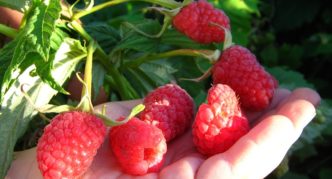
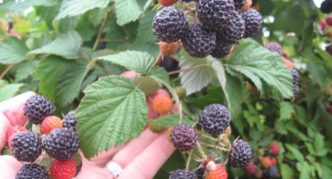
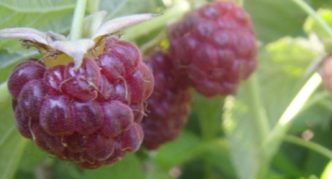
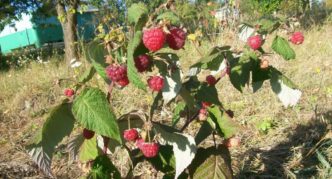
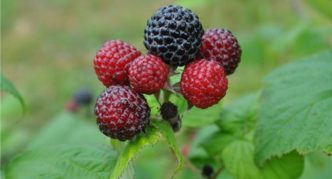
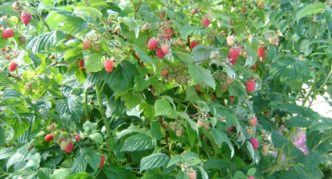

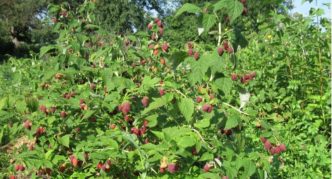
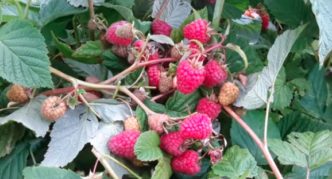
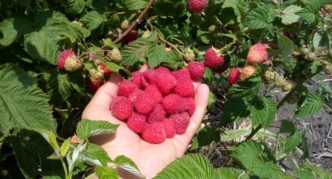
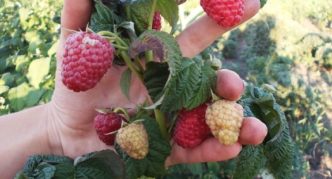
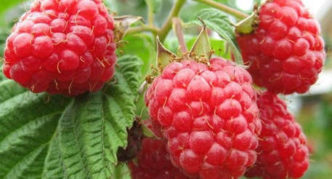


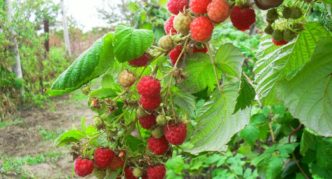
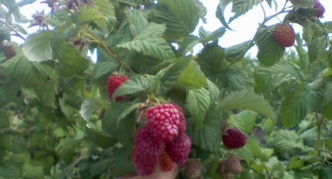
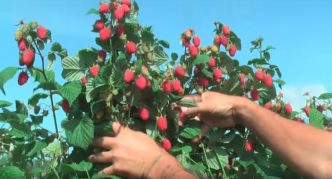
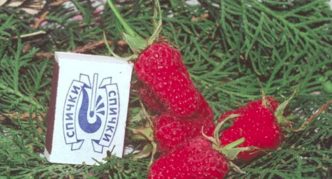



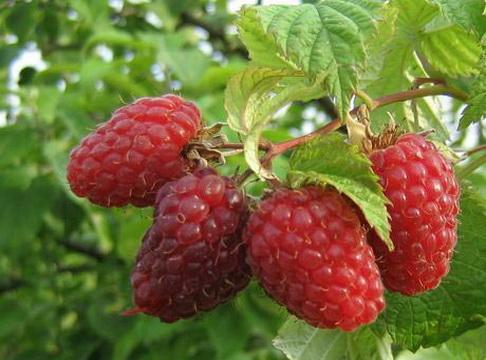
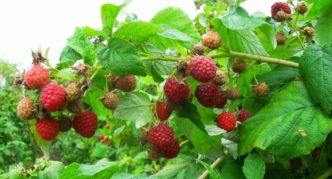
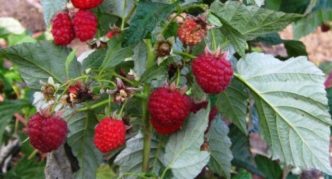

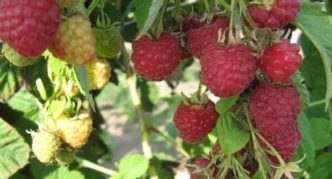
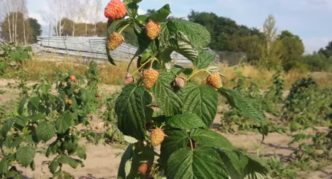
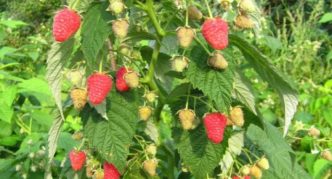

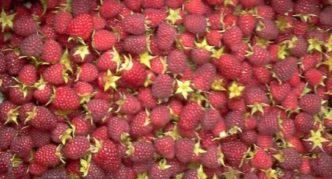
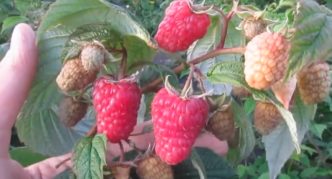
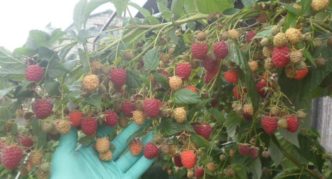


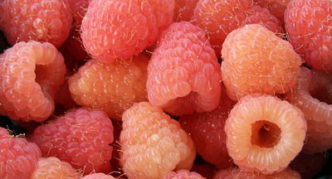
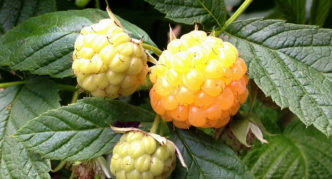

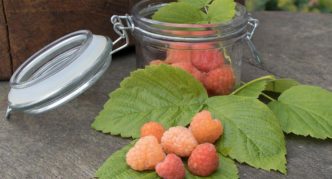
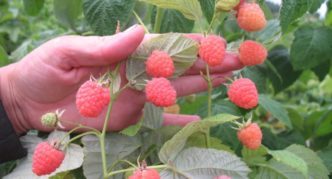
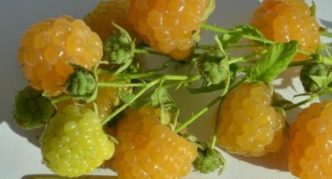
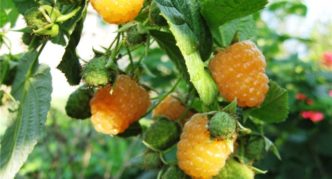

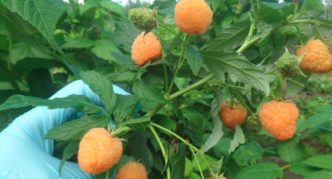
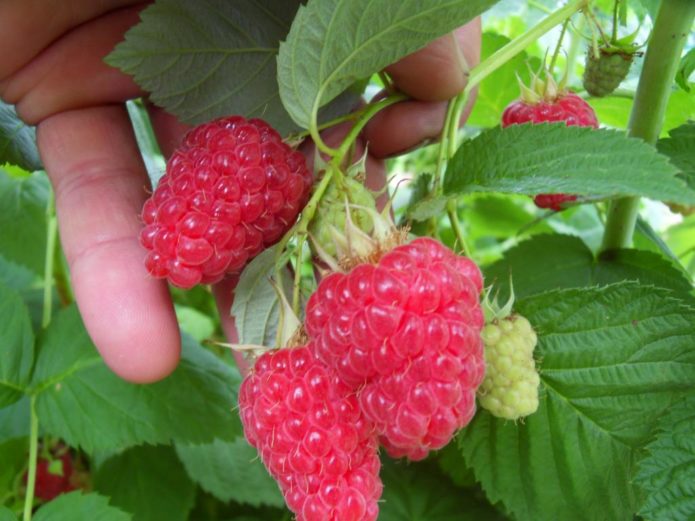
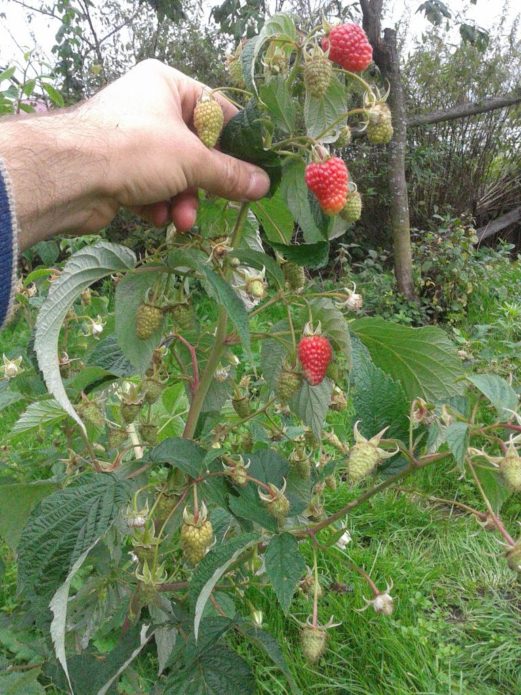

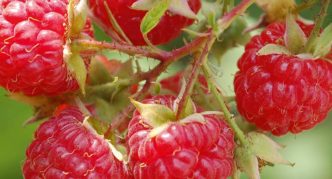
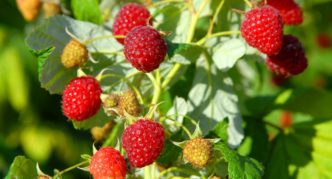
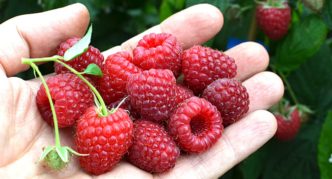
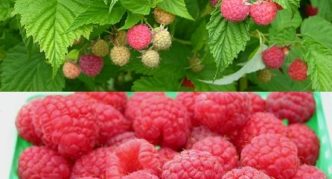
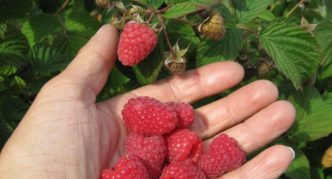
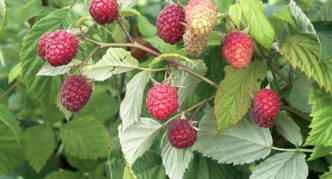

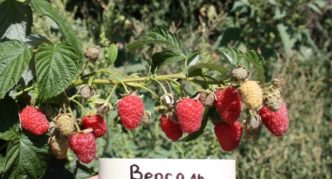
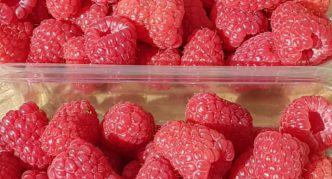
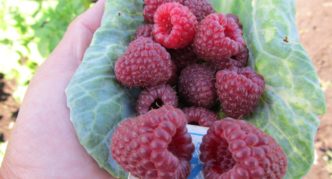
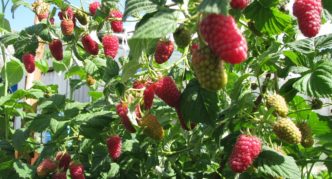

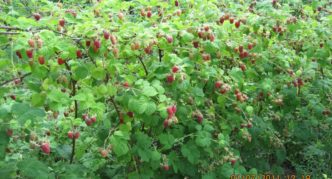

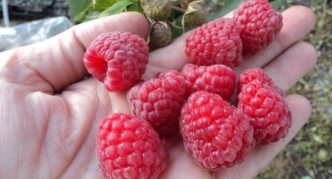
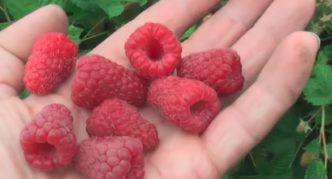

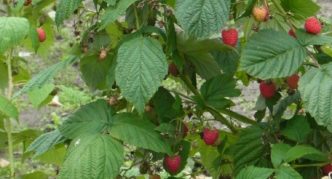
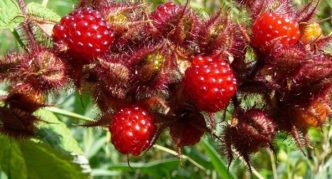

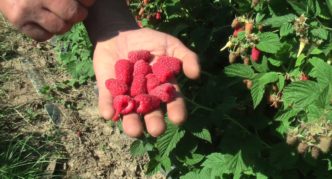

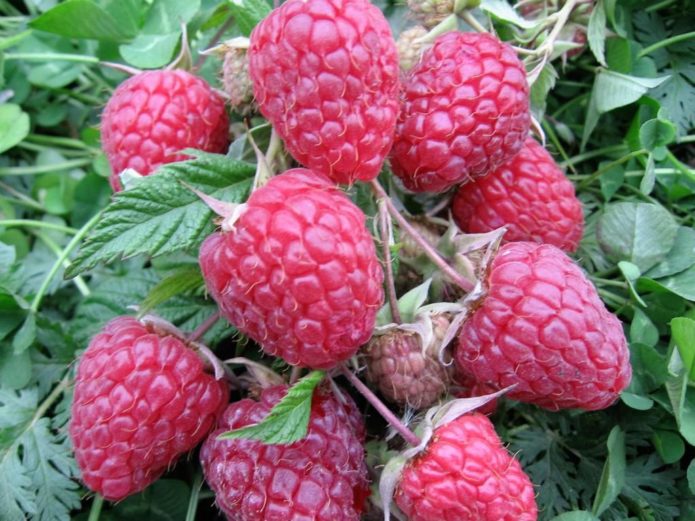
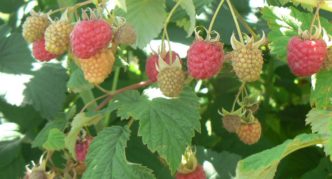
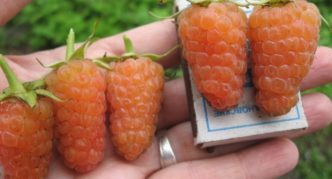
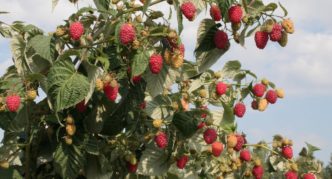
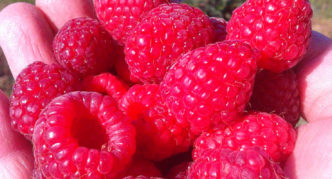
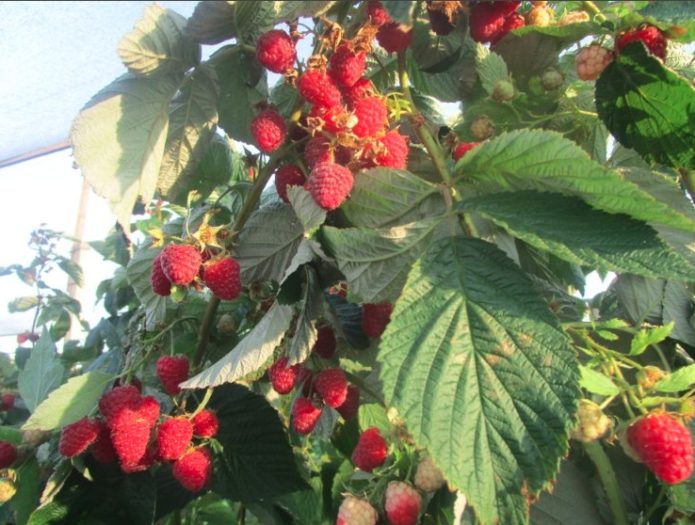

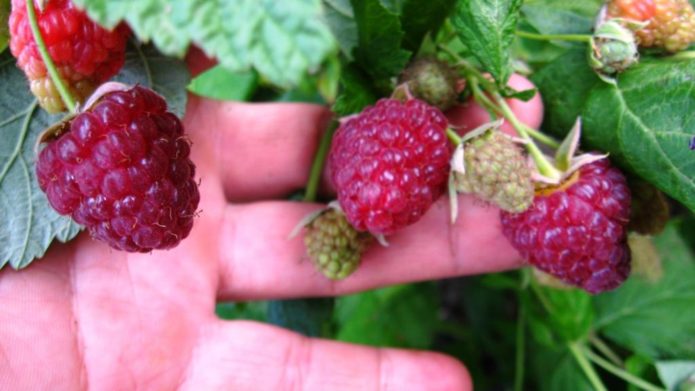

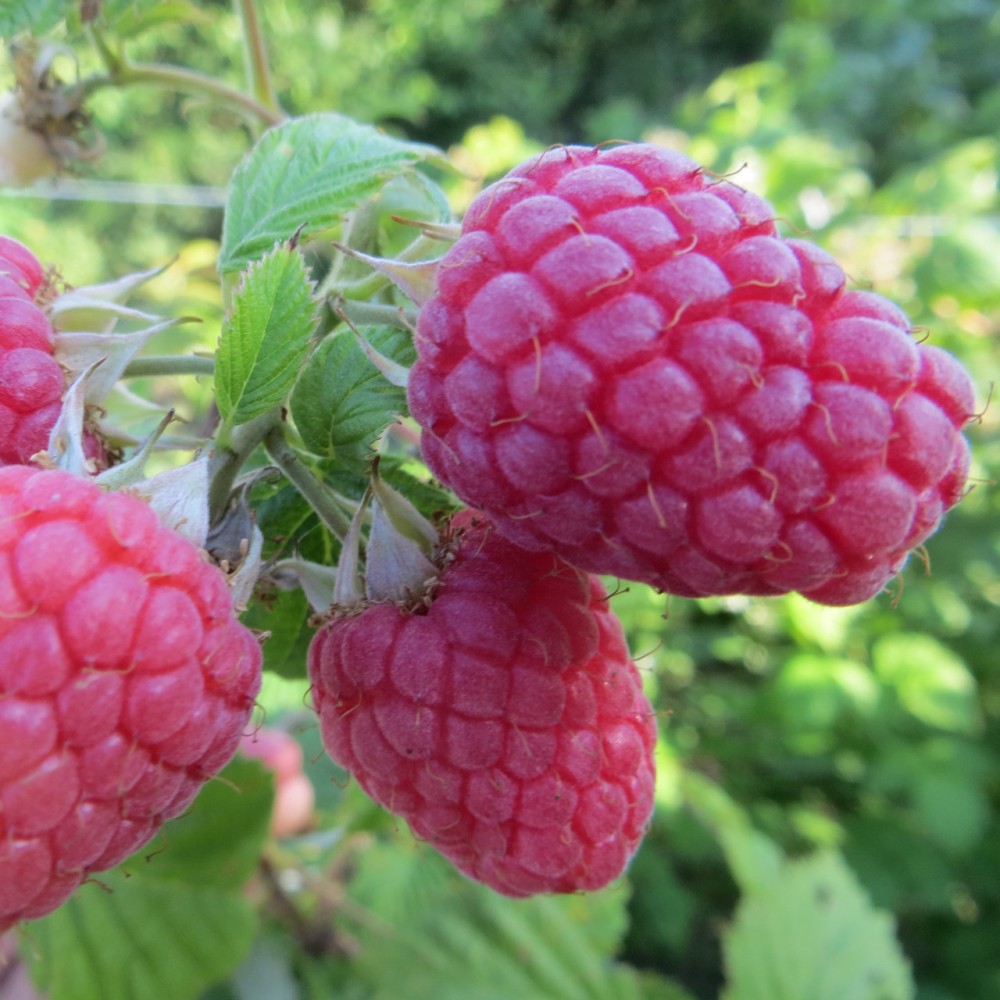

1 comment